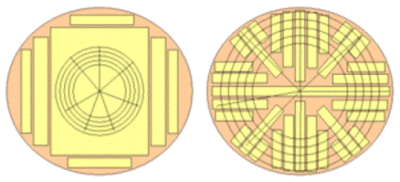The Influence of Wood as Casks on Whisky
Maturation in Casks
Whisky is matured for several years in casks of different origins. What
influences the maturation process? Why do whiskies from one distillery
sometimes taste so differently? There are many factors that contribute to the final flavour of whisky. Consider Scotch whisky. In Scotland, the spirit must mature in casks for a minimum of three years to be legally called whisky. In this time frame, the spirit is influenced by the cask it’s been in. Quite obviously, the longer the time spent in the cask, the better the quality and final taste of the whisky. The type of wood used, age, size and the previous liquid in the cask all matter. The innate qualities of the new make are given the required finesse and final taste by the cask.
Numerous experts try to identify the different flavours with
physicochemical methods. Even the smallest amounts can account for big
differences in taste. That's how sensitive our senses are. Researchers
measure the various substances like esters, tannins, lactones, vanillins, etc. in
ppm (parts per million) and ppb (parts per billion). These small
quantities are hard to grasp in a nano-dimensional world.
The smallest changes in the maturation process also have an enormous
influence on the taste of the whisky; this implies that the
wooden cask is the most important component of the maturation process.
The Wood
A
wooden cask is a masterpiece of craftsmanship. Although more and
more machines are used by coopers today, the actual manufacturing is
still done by hand. The planks for the staves mustn't simply be cut at
right angles from a log-like construction timber. The grain direction of
the wood must be taken into account so none of the radial vessels of
the wood penetrates the side of the cask. Otherwise too much alcohol
evaporates or the cask may even start to leak. Only oak wood is suitable
for cask production. Softwood contains resin, which prevents the cask
from breathing. Other types of wood emit unpleasant flavours that make
the whisky awkward or even unpalatable. Oak wood from trunks with an age
of 70 to 200 years is ideal.
There are two
fundamentally different species of oak: American white oak (Quercus
alba) and the various European oak species (Quercus in general).
American white oak grows faster and has a mellower, finer and more
contained aroma, while European oak provides full, intense aromas and
more tannins. American oak can be cut down after 70 years, while the
slower-growing European oak must at least grow for 100 additional years. It is far more expensive than American oak, up to 10 times.
Wood doesn't only
contain annual rings but also vessels that lead from the core to the
bark radially. The tree transports water and nutrients through these
vessels. For whisky, however, these vessels are inconvenient since they
make the cask staves leaky. Therefore the wood must be cut according to
special patterns (star cut, mirror cut or rift cut) so the annual rings
stand vertically. With this method far less usable wood can be cut from
one log, so a cask stave is much more expensive than a normal plank.
These planks are then made into staves with trapezoidal wanes (according to the roundness of the planned cask). The newly made staves must then be dried until they reach a level of less than 10% residual moisture. Whether this is left to nature and solar heat or done quickly in modern drying chambers doesn’t affect the quality of the cask.
If the casks were made from this wood, you would get a tight container, but the whisky couldn't mature. From a maturation standpoint, the wood is still dead. Only the following thermal treatment breathes life into the wood. This is a combined process. Only with heat the wood can be bent into the typical cask shape. During 'toasting', the wood is heated up to 200°C in a big oven for approximately 30 minutes, and the firm wood structure is broken up, cellulose is split into wood sugar and caramelises, and the Lignin is partially converted into Vanillin. The cask begins to live in terms of maturation. After the cask has been bent into shape, the inside of the cask is burned (charred) for 3 to 5 minutes and extinguished with water.
These planks are then made into staves with trapezoidal wanes (according to the roundness of the planned cask). The newly made staves must then be dried until they reach a level of less than 10% residual moisture. Whether this is left to nature and solar heat or done quickly in modern drying chambers doesn’t affect the quality of the cask.

No comments:
Post a Comment